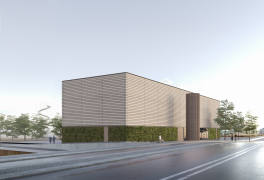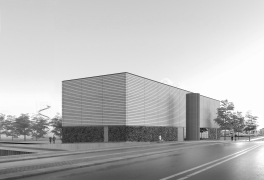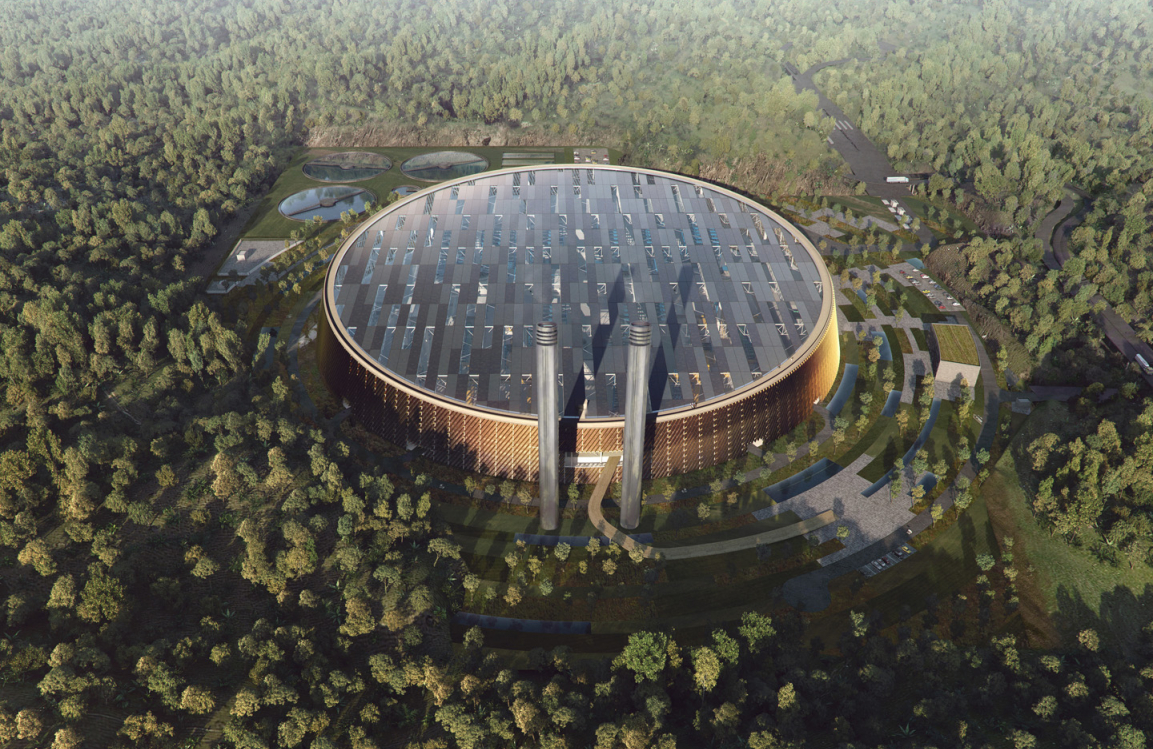
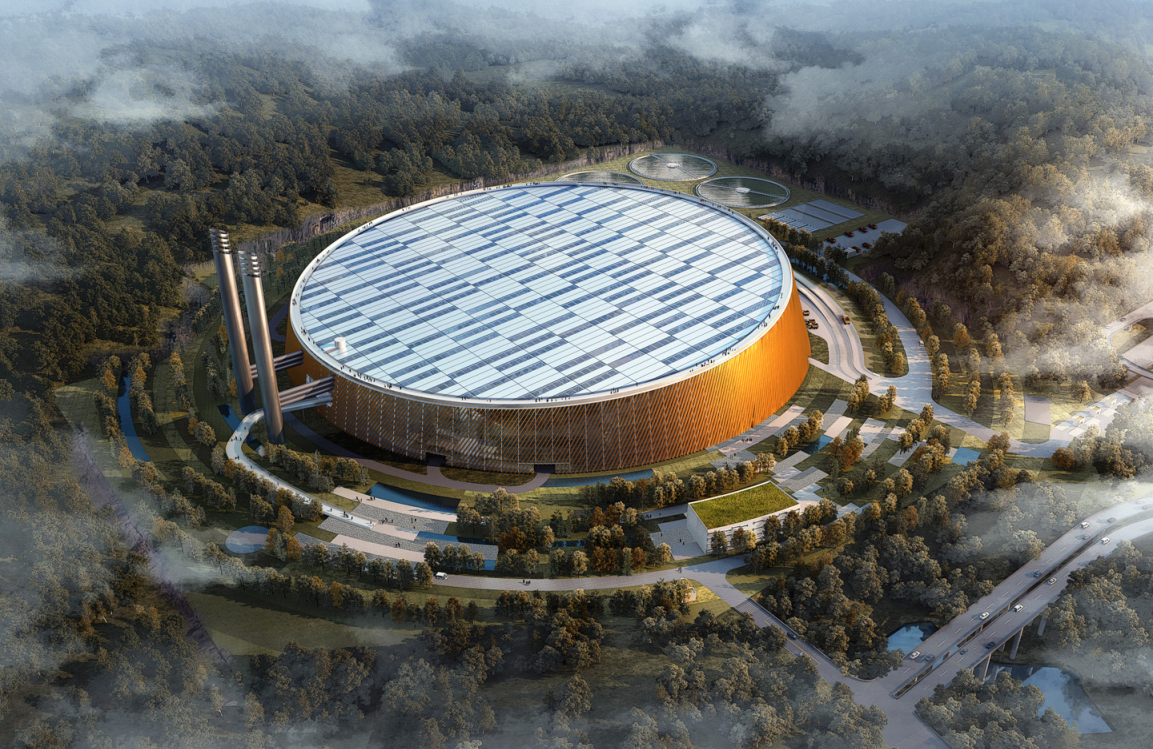
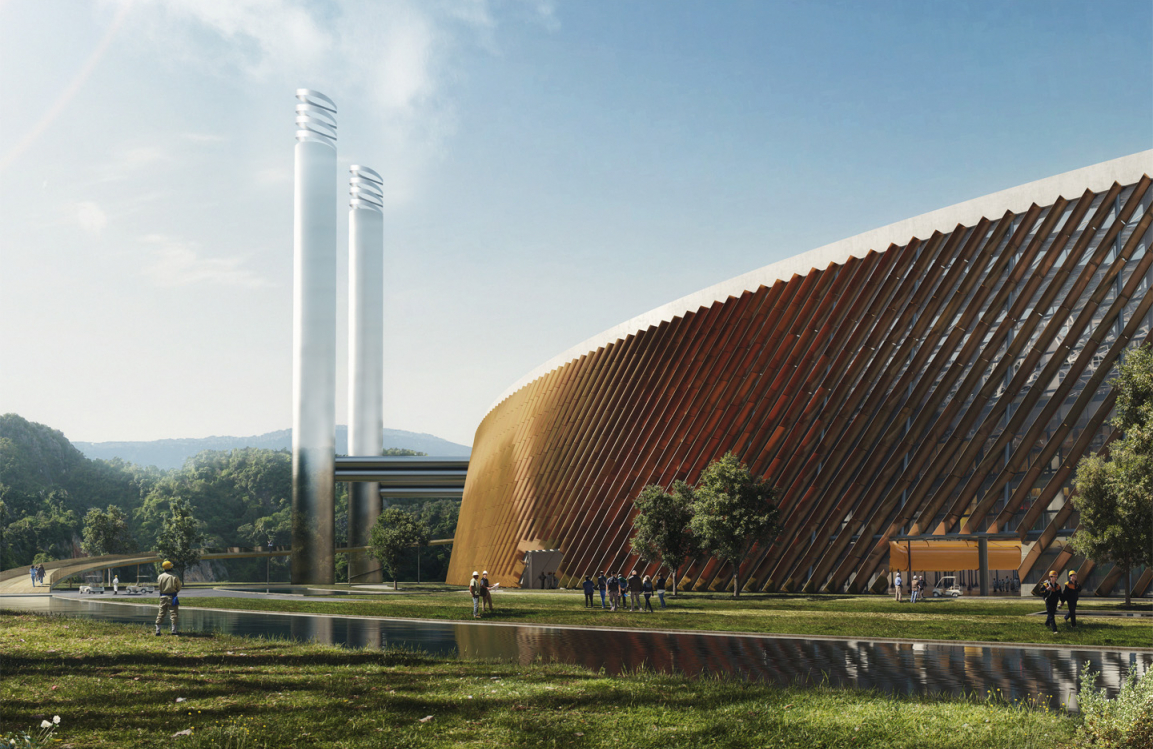

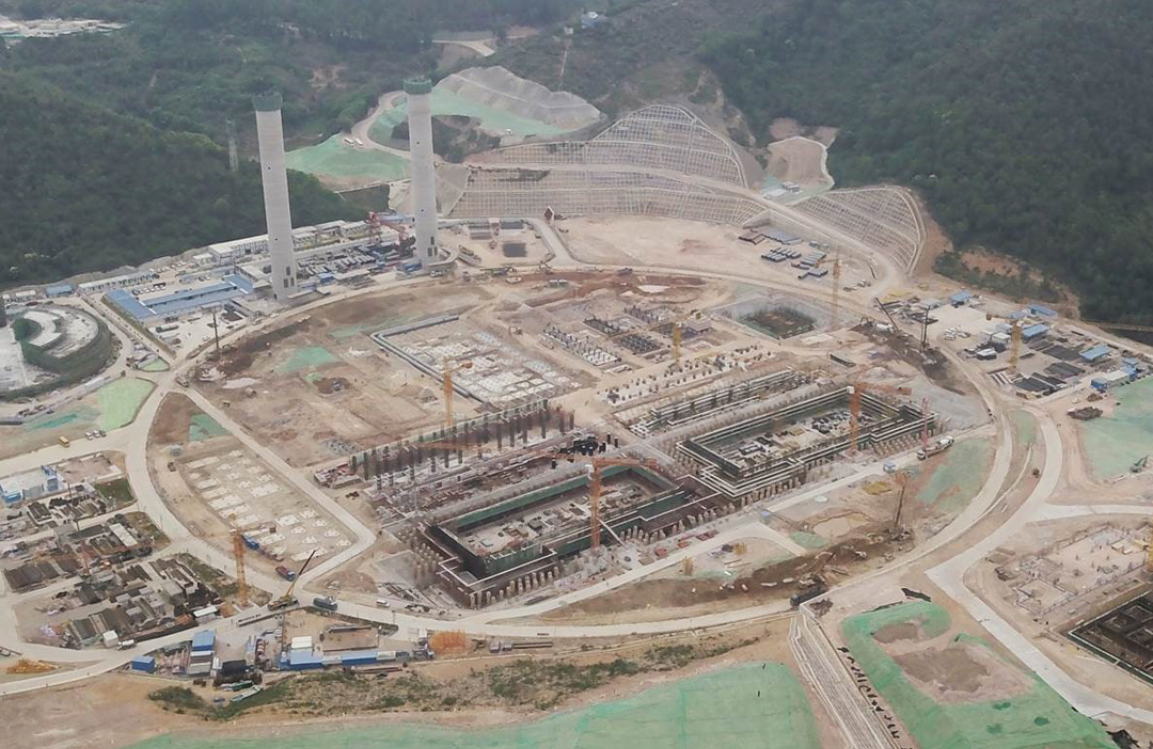
Shenzhen, China - Waste-to-energy Plant
Gottlieb Paludan Architects and Schmidt Hammer Lassen Architects won the international competition to design the world’s largest waste-to-energy plant.
The new Shenzhen East Waste-to-Energy Plant will incinerate 5,000 tonnes of waste per day, corresponding to one third of the waste generated by Shenzhen’s 20 million inhabitants. The plant will utilize the most advanced technology in waste incineration and power generation and, at the same time, act as a source of education for the citizens of Shenzhen.
The winning design organizes the entire plant, including auxiliary buildings, into one circular building - breaking with the traditional rectangular layout of technical facilities. By proposing a clear circular form the footprint of the plant is reduced. The 66,000 m² roof is designed to be covered by up to 44,000 m² of solar panels, providing the opportunity for the plant to produce even more energy for the city.
The plant is intended to showcase waste-to-energy production as an important technical process that deals with the issues of growing amounts of waste as well as the issue of finding more environmentally friendly ways of generating power.
Design challenges
- Developing a unifying architectural concept for a very large and complex technical facility in a sensitive environment.
- Integrating heavy technical infrastructure with public access and education facilities.
Visualisations: Gottlieb Paludan Architects



